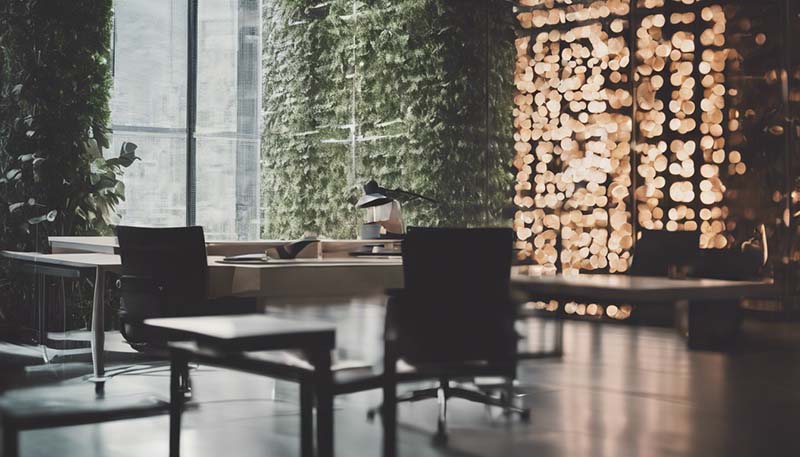The Role of Texture in Office Design
The Role of Texture in Office Design
Office design is a critical aspect of creating a productive and comfortable work environment. Among the various elements of design, texture plays a subtle yet significant role in influencing the mood, aesthetics, and functionality of office spaces. This article explores the importance of texture in office design, its impact on employee well-being, and how to effectively incorporate it into office interiors.
Understanding Texture in Design
Texture refers to the visual and tactile quality of surfaces. It can be actual, where the material has a real tactile surface, or simulated, where the texture is only visual and not physically tangible. In office design, texture can be found in various elements such as walls, floors, ceilings, furniture, and decorative items.
Types of Textures
There are two main types of textures:
- Visual Texture: Created by the pattern or design on the surface that can be seen but not touched.
- Tactile Texture: The actual feel of a surface, which can be rough, smooth, soft, or hard.
The Psychological Impact of Texture
The human brain is wired to respond to textures, associating them with certain feelings and memories. For instance, a rough texture might remind someone of nature and outdoor activities, while a smooth texture can evoke a sense of sophistication and calmness. In an office setting, the right textures can:
Advertisement
- Reduce stress and promote relaxation.
- Enhance focus and concentration.
- Create a sense of warmth and welcome.
- Increase satisfaction and pleasure in the workplace.
Benefits of Incorporating Texture in Office Design
Incorporating a variety of textures into office design can have several benefits, including:
1. Aesthetic Enhancement
Texture adds depth and interest to a space, making it visually more appealing. It can help to break up large expanses of a single material, such as a wall or floor, and create a more dynamic environment.
2. Acoustic Improvement
Certain textures, particularly those that are porous or have a soft, fibrous quality, can help to absorb sound, reducing echo and noise levels in the office, which is particularly beneficial in open-plan spaces.
3. Ergonomic Comfort
Tactile textures can provide a more comfortable experience. For example, a textured grip on a pen can reduce hand fatigue, and a textured surface on a chair or desk can offer better support and reduce the risk of slipping.
4. Branding and Identity
The choice of textures can reflect a company's brand identity. For instance, a tech company might opt for sleek, smooth surfaces to convey modernity, while a creative agency might choose more organic, rough textures to represent their innovative and unconventional approach.
5. Wayfinding and Signage
Texture can also be used as a wayfinding tool. Different textures on floors or walls can subtly guide employees and visitors through the office space without the need for explicit signage.
Strategies for Incorporating Texture in Office Design
Here are some strategies for effectively incorporating texture into office design:
1. Layering Textures
Mix and match different textures to create visual interest and depth. For example, a smooth glass table top can be paired with a rough, woven rug and a soft, plush sofa.
2. Contrast
Use contrasting textures to highlight certain areas or features within the office. A smooth, polished floor can make a textured wall feature pop, or a rough-hewn wood table can stand out against a sleek, modern backdrop.

3. Balance
Balance is key when dealing with multiple textures. Too many rough textures can make a space feel chaotic, while too many smooth textures can make it feel cold and uninviting. Aim for a harmonious blend that feels comfortable and visually pleasing.
4. Functional Considerations
Consider the function of each space when choosing textures. High-traffic areas might benefit from more durable, hard-wearing textures, while areas designed for relaxation or concentration might benefit from softer, more comforting textures.
5. Cultural and Personal Preferences
Be mindful of cultural and personal preferences when selecting textures. What feels comfortable and appealing to one person might not be the same for another. Aim for a design that is inclusive and considerate of diverse tastes and backgrounds.
Conclusion
Texture is a powerful, yet often underutilized, element in office design. By understanding the psychological impact of texture and the benefits it can bring to the workplace, designers can create environments that are not only aesthetically pleasing but also enhance productivity, well-being, and brand identity. Whether through the use of visual or tactile textures, the thoughtful incorporation of texture can transform a space from ordinary to extraordinary.